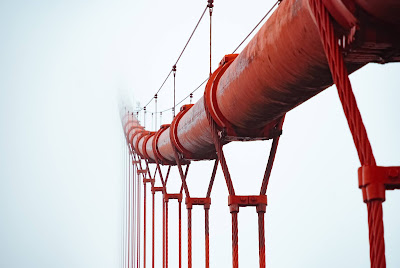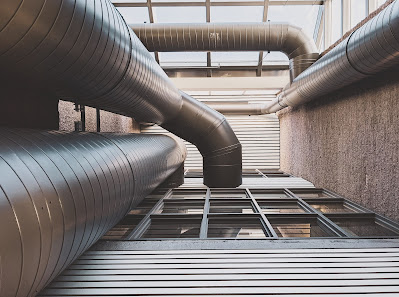Today, pipe engineering is a booming industry. From pipeline construction to pipeline maintenance, piping engineering plays an integral role in the industry.
In the following sections, we will explore what piping engineering design is and how it can benefit you and your company. We will discuss the different types of piping engineering design and their potential applications in modern society. Lastly, we will explore some of the benefits that come with utilizing a piping engineering design for your company's next project.
The term piping engineering can be broadly defined as the design and construction of pipelines, pumping stations, and other related components. Piping engineering is a broad term that covers many different specific practices.
Piping engineers use various tools to measure fluid flow. Some examples include flow meters, pressure gauges, and thermometers. These equipment and instruments help the piping engineer ensure that pipelines are correctly sized for transporting fluids at maximum capacity without compromising safety or efficiency.
Pipelines must be designed to transport the fluid efficiently. They require an accurate design that will ensure that all of the fluid can be transported, and they must be built with a material that won’t corrode. A pipeline engineer designs these pipelines by considering several factors including diameter, capacity, slope, and pressure.
Pipeline construction is a very complicated process with many steps. It starts with designing the pipeline which is followed by securing permits from various government agencies for different stages of construction before finally connecting the different sections of the pipeline at their termination points.
 |
| Photo by JJ Ying on Unsplash |
Introduction: What is Piping Engineering?
Piping engineering refers to the discipline of designing and manufacturing pipes that transport fluids and gases.
The scope of the piping engineer includes:
- Designing and manufacturing pipes that transport fluids and gases.
- Supporting the installation of these pipes in various applications, such as land-based or offshore construction, mining, power plants, factories, water treatment plants, refineries.
- Determining what type of pipe is needed for a specific application.
- Ensuring that the pipes meet requirements for pressure and temperature ratings, corrosion protection measures, noise control measures, accessibility requirements for inspection or maintenance work.
Piping Engineering is the process of designing and manufacturing the various piping systems that are necessary for the transmission of fluids, gases, and slurries.
Piping engineering can also be referred to as pipeline engineering. It is one of the most well-known disciplines in mechanical engineering. It has come into prominence because it is needed to supply utilities for human life like water, gas, sewage treatment, oil, and natural gas. The piping engineer designs all the piping systems that are necessary for this purpose like tanks, pumps, compressors, etc.
Piping Engineering is a field of engineering that deals with designing and maintaining the piping system of a given industry.
It is an engineering discipline that specializes in fluid systems and networks. Piping systems mix various components such as solids, liquids, gases, and vapors.
How Do Mechanical Engineers Work With Piping Engineering Design?
When designing a pipeline, engineers have to take into consideration the flow of gas or liquid through the pipe. They also have to consider how the pipeline will be used, for example transporting oil or gas.
Pipeline engineers will typically work with mechanical engineers to design pipelines that are safe and easy to maintain. They are responsible for ensuring that pipes are not leaking or breaking under pressure, as these can cause significant damage to property and people.
Mechanical engineers work with the design of pipelines, also known as piping engineering.
Piping engineering is a complex process where one has to deal with a variety of materials and constraints. The process involves the design, fabrication, and installation of structures that carry fluids or gases from one location to another.
To be able to work on piping engineering projects, you need specialized knowledge in mechanical engineering for fluid systems, power generation equipment, fire protection system design, and various other aspects.
Pipeline Design Methods for Different Circumstances
There are three main types of pipeline design methods:
1. Pipeline design for a new product
2. Pipeline design for established products
3. Pipeline design for a portfolio of products
The main difference in the type of pipeline design is the amount of information available about the product. A new product is usually not well-known when it is introduced to the market, but it will eventually become an established product when it has been on the market for some time and people have come to know more about its benefits and pitfalls.
Different pipeline design methods are needed for different circumstances. For example, if you are designing pipelines for data scientists, you need to take into account that they will be using their skills differently than the traditional software engineers.
Data scientists use more streaming approaches than traditional software engineers. A pipeline might need to be designed for some kind of analytics, so the pipeline designer would need to think about how the data is going to flow through the pipeline and what is needed downstream before designing it.
The design of a pipe will also depend on the type of work the people in an organization do - some people might need more control or greater flexibility than others. This will not only impact how a pipeline is designed but also how people collaborate on their projects and who does what work within a project. So there needs to be more discussion about this, but it's important to think about this now so that we're prepared for the future.
 |
| Photo by Sigmund on Unsplash |







0 Comments